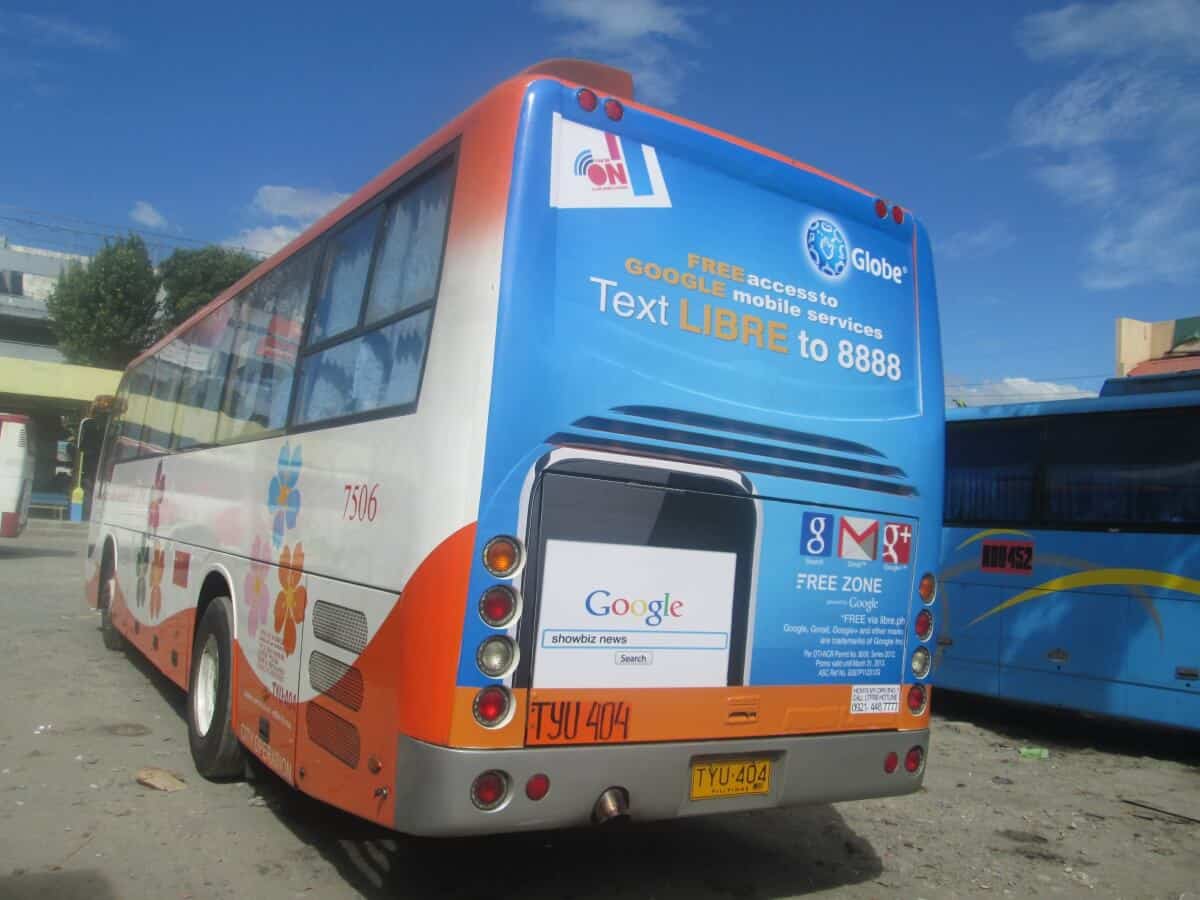Recognizing the Role of Transportation Advertising in Enhancing Brand Presence and Consumer Interaction
Transportation advertising has actually become an essential component in the marketing landscape, using unique chances for brand names to elevate their presence and engage consumers properly. With the ability to reach a captive and varied target market during their everyday commutes, these advertising and marketing techniques are not just about visibility; they are about producing significant links with possible customers. As we explore the diverse advantages and cutting-edge strategies within transit advertising, it ends up being necessary to consider how these elements jointly affect customer perception and behavior, questioning about their long-lasting influence on brand loyalty.
Meaning of Transit Marketing
Transit advertising describes the method of advertising products, services, or brands through promotions positioned around public transport systems. This form of advertising incorporates a selection of placements, including posters on trains and buses, electronic screens at transit terminals, and covers on the outside of vehicles. It intends to reach a varied target market, utilizing on the high foot web traffic connected with public transportation.
Transit marketing is strategically placed to catch the attention of travelers, who frequently invest substantial time taking a trip or waiting. By integrating advertisements right into the daily regimens of individuals, brand names can produce a lasting impact and foster brand acknowledgment. The medium is specifically efficient in urban atmospheres, where mass transit is a key setting of travel.
Additionally, transportation marketing can help with localized targeting, allowing businesses to get to details demographics based on transportation routes and station places. As urban populaces expand and making use of public transportation boosts, this advertising technique has actually acquired prestige as a vital element of incorporated marketing methods. The vibrant nature of transit marketing, integrated with its ability to engage consumers in a restricted environment, underscores its relevance in modern advertising methods.
Advantages of Transit Advertising
The efficiency of transportation advertising and marketing hinges on its ability to provide a wide variety of advantages to brand names looking for to enhance visibility and interaction. Among the key advantages is the comprehensive reach it uses; transportation advertisements can effectively target diverse demographics across metropolitan locations, getting to both pedestrians and travelers alike. This wide direct exposure significantly increases brand understanding.
An additional advantage is the high frequency of perceptions. As transit automobiles follow recognized paths and quit at several locations, they produce repetitive exposure that strengthens brand name messages. This frequency cultivates knowledge, which is vital in consumer decision-making.
Transit advertising is also cost-effective compared to various other media systems. Provided its extensive reach and capacity for high impressions, brand names usually experience a reduced expense per thousand impressions (CPM), optimizing their advertising and marketing budget plan.
Furthermore, transit advertisements can produce a sense of area link. By aligning with neighborhood transportation systems, brands can reverberate with regional audiences and cultivate a feeling of local satisfaction. This localized approach improves brand name loyalty and engagement, making transportation advertising an engaging option for businesses intending to solidify their visibility out there.

Reliable Techniques for Transportation Campaigns
To make the most of the influence of transit projects, brands must leverage critical planning and implementation tailored to their target audience. Initially, identifying the group qualities of the target market using public transportation is crucial. This enables brand names to create individualized messaging that reverberates with prospective consumers.
Next, choosing the appropriate transit mediums is crucial. Whether utilizing bus covers, metro posters, or digital screens, each tool has one-of-a-kind advantages that can improve presence. For instance, dynamic visuals on bus covers can stand out, while digital ads can be upgraded often to mirror prompt promotions.
Additionally, incorporating a cohesive branding technique throughout transportation systems ensures consistency and enhances the brand's identification. Making use of attractive styles and unforgettable taglines will reinforce brand recall among commuters.
By using these methods, brands can efficiently harness the potential of transportation advertising and marketing, promoting greater recognition and link with their target audience. Eventually, a well-executed transit project can drive considerable growth in brand name exposure and consumer involvement.

Gauging Effect and Engagement
In evaluating the performance of transit marketing campaign, precise dimension of effect and engagement is essential for brand names seeking to maximize their advertising strategies. Metrics such as reach, regularity, and impressions give foundational information to examine visibility. Examining these elements aids figure out the amount of potential consumers are exposed to the promotions during their everyday commutes.
Engagement can be additional determined via consumer communications, such as site traffic, social networks mentions, and direct feedbacks to calls-to-action included in the advertisements. Making use of tools like QR codes or special Links can facilitate monitoring of consumer actions straight connected to transportation campaigns. Surveys and responses mechanisms likewise work as valuable techniques to collect qualitative information on consumer understandings and recall of the promotion.
Moreover, advanced analytics and acknowledgment versions can associate transit exposure with subsequent investing in behavior, providing insights right into the return on financial investment. By employing an extensive technique that incorporates quantitative and qualitative steps, brands can establish a nuanced understanding of their transportation advertising and marketing influence. Inevitably, this data-driven technique allows brands to fine-tune their projects, guaranteeing they reverberate properly with target audiences and improve general brand exposure.
Study of Effective Projects
Effective transportation marketing campaign work as engaging instances of just how effective strategies can elevate brand name presence and involvement. Transit Advertising Philippines. One remarkable instance is the "I Love New York" project, which transformed the city's image and attracted numerous visitors. By making use of train ads, billboards, and bus covers, the project produced a strong, natural go to these guys brand name identity, resulting in a significant uptick in tourist and regional company patronage
Another excellent campaign is news Coca-Cola's "Share a Coke" initiative, which leveraged transportation marketing to personalize the brand name experience. By including popular names on advertising products across numerous transit systems, Coca-Cola promoted a deeper psychological connection with customers, motivating them to share their experiences on social media.
In addition, the "Got Milk?" campaign effectively used mass transit advertisements to reach a broad target market, strengthening the message of the importance of milk in a well balanced diet. The project saw a measurable rise in milk consumption in target demographics.
These study highlight that when performed attentively, transit advertising and marketing can substantially boost brand presence, foster consumer interaction, and drive quantifiable results, demonstrating its vital function in modern-day advertising techniques. - Transit Advertising Philippines
Conclusion
In verdict, transportation advertising and marketing acts as an essential tool for improving brand name visibility and promoting customer involvement. By utilizing tactically positioned advertisements within public transport systems, brand names can effectively reinforce and reach diverse target markets acknowledgment via consistent exposure. The application of targeted messaging and cutting-edge approaches further enhances the effect of transportation projects. Inevitably, the ability to measure engagement and evaluate effective instance studies underscores why not find out more the effectiveness of transit marketing in driving brand loyalty and consumer interactions.
Transportation advertising and marketing has actually emerged as a critical element in the marketing landscape, offering one-of-a-kind possibilities for brand names to elevate their visibility and involve customers efficiently.Additionally, transportation advertising and marketing can assist in localized targeting, permitting organizations to reach specific demographics based on transportation paths and station locations.In reviewing the efficiency of transit advertising and marketing projects, accurate dimension of effect and engagement is crucial for brand names seeking to maximize their marketing approaches.Successful transportation marketing campaigns offer as compelling instances of exactly how reliable methods can elevate brand name exposure and engagement.In verdict, transit advertising and marketing serves as an essential tool for boosting brand presence and fostering customer engagement.
Comments on “Transit Advertising Philippines: An Innovative Method to Market”